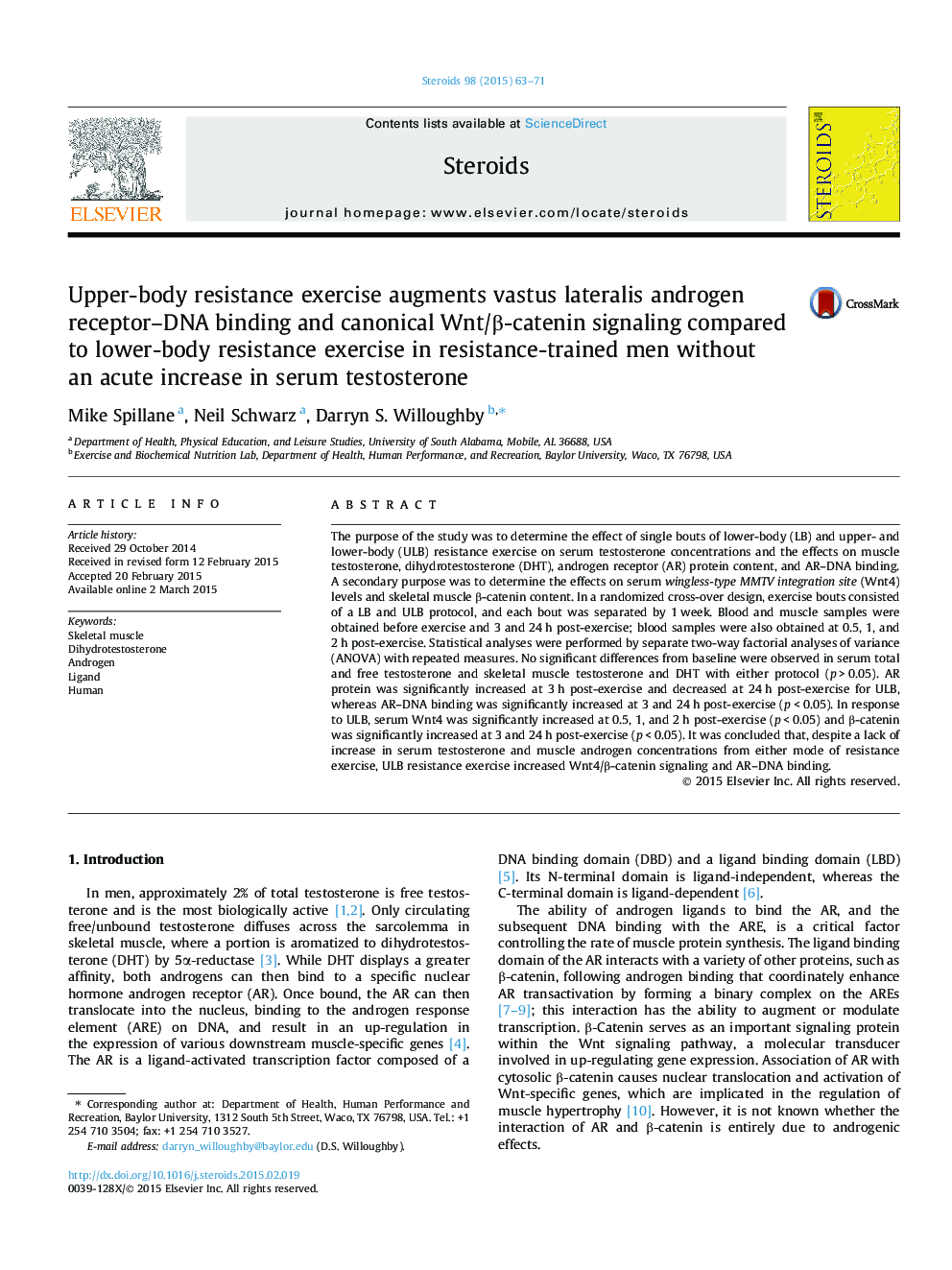| کد مقاله | کد نشریه | سال انتشار | مقاله انگلیسی | نسخه تمام متن |
|---|---|---|---|---|
| 2029166 | 1542709 | 2015 | 9 صفحه PDF | دانلود رایگان |

• Lower- and higher-volume resistance exercise did not increase serum testosterone.
• Neither volume of resistance exercise increased muscle testosterone and DHT.
• Higher-volume exercise decreased AR content and increased AR–DNA binding.
• Higher-volume exercise increased serum Wnt4 and muscle β-catenin content.
• Wnt4/β-catenin signaling and AR–DNA binding occurs independent of testosterone.
The purpose of the study was to determine the effect of single bouts of lower-body (LB) and upper- and lower-body (ULB) resistance exercise on serum testosterone concentrations and the effects on muscle testosterone, dihydrotestosterone (DHT), androgen receptor (AR) protein content, and AR–DNA binding. A secondary purpose was to determine the effects on serum wingless-type MMTV integration site (Wnt4) levels and skeletal muscle β-catenin content. In a randomized cross-over design, exercise bouts consisted of a LB and ULB protocol, and each bout was separated by 1 week. Blood and muscle samples were obtained before exercise and 3 and 24 h post-exercise; blood samples were also obtained at 0.5, 1, and 2 h post-exercise. Statistical analyses were performed by separate two-way factorial analyses of variance (ANOVA) with repeated measures. No significant differences from baseline were observed in serum total and free testosterone and skeletal muscle testosterone and DHT with either protocol (p > 0.05). AR protein was significantly increased at 3 h post-exercise and decreased at 24 h post-exercise for ULB, whereas AR–DNA binding was significantly increased at 3 and 24 h post-exercise (p < 0.05). In response to ULB, serum Wnt4 was significantly increased at 0.5, 1, and 2 h post-exercise (p < 0.05) and β-catenin was significantly increased at 3 and 24 h post-exercise (p < 0.05). It was concluded that, despite a lack of increase in serum testosterone and muscle androgen concentrations from either mode of resistance exercise, ULB resistance exercise increased Wnt4/β-catenin signaling and AR–DNA binding.
Journal: Steroids - Volume 98, June 2015, Pages 63–71